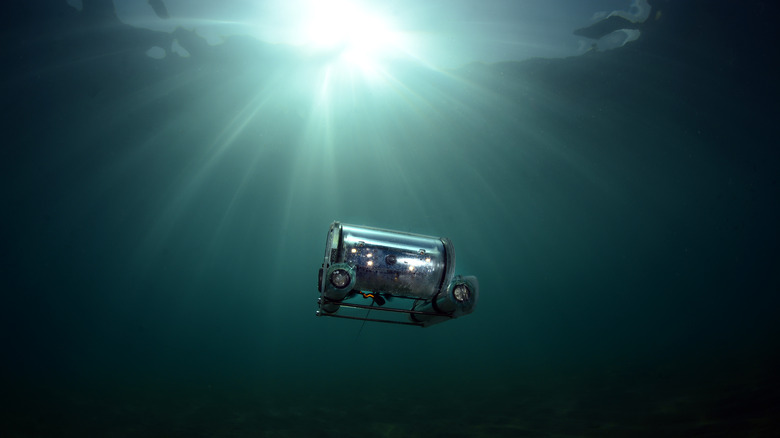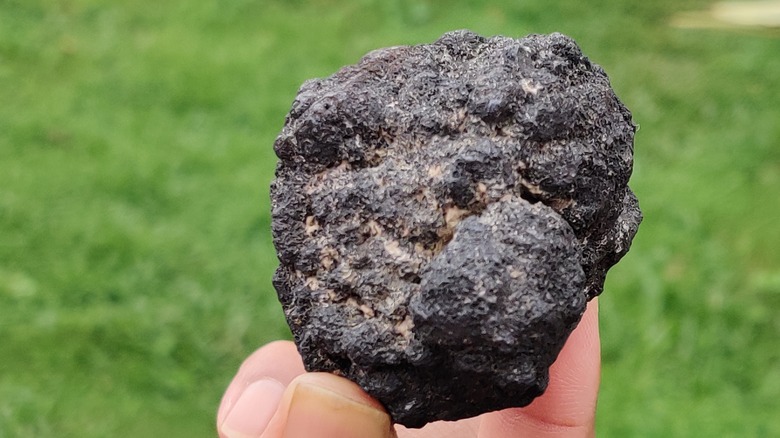Why The Discovery Of 'Dark Oxygen' Is So Important
In 2013, a group of scientists studying the sea floor in the Pacific Ocean made a potentially revolutionary discovery: they detected rising oxygen levels at ocean depths where no sunlight — essential for oxygen-producing photosynthesis — could penetrate.
Andrew K. Sweetman, a researcher from the Scottish Association of Marine Science (SAMS) who was on that mission, doubted what he was seeing so much that he sent the team's instruments back to the manufacturer to be recalibrated and tested. When the company told him everything was in working order, Sweetman began conducting similar tests in the ocean, which garnered similar results. The team now claims that polymetallic nodules on the ocean floor are the source of this sunlight-absent oxygen production. Due to the unequal distribution of elements they are composed of, the nodules have been shown under laboratory conditions to produce electrical charges strong enough to split oxygen from water molecules, all in complete darkness.
Sweetman and his team published their findings in July 2024 in Nature Geoscience, and if what they claim is true, the discovery could completely upend our understanding of biological evolution on Earth and the oxygenation of its oceans. It's perhaps for this reason that the paper's claims are being challenged, both by the scientific community and the deep sea mining companies that have a huge incentive to disprove such a finding. The fight to decide who is right could have long-lasting implications for the future of large-scale mining operations on the ocean floor and our understanding of our own planet.
How dark oxygen might be produced
The dark oxygen production that Andrew Sweetman and his team claim to have observed occurred in a region of the Pacific Ocean known as the Clarion-Clipperton Zone, an area covering 1.7 million square miles between Hawaii and Mexico where polymetallic nodules — potato-sized clumps of metal elements like manganese, cobalt, and nickel — are found in abundance on the sea floor.
After collecting and testing the nodules, the team discovered that there were differences in voltage levels in various places on their surfaces owing to the unequal distribution of metals within them. The potential differences between the metal ions in the nodules were significant enough to lead them to believe that what might be occurring was a kind of seawater electrolysis, where water molecules are split into hydrogen and oxygen, thus accounting for the strange readings they were detecting.
Sweetman and his team employed specialized tools known as benthic chambers to enclose sections of the seafloor and assess oxygen levels in the water. Normally, oxygen in these environments gradually gets consumed by marine life, leading to a steady decline in concentrations within the chamber. Contrary to what they expected, however, researchers noticed a steady rise in oxygen levels, causing them to believe there was an oxygen source that had yet to be identified. This led them to study the polymetallic nodules on the ocean floor more closely and identify them as a potential source of oxygen production.
The fight over dark oxygen and the ocean floor
Andrew Sweetman and team's claims have put the future of the ocean floor under an increasingly bright and controversial spotlight. Crucially, the metals found in the nodules at the center of the study are highly sought after for their use in making lithium-ion batteries. As such, businesses like The Metals Company, which sponsored the expedition that led to Sweetman's findings, are gearing up for large-scale mining operations to extract those same precious metals.
Shortly after the paper's release, The Metals Company published a strongly-worded rebuttal of the claims Sweetman and team are making, stating that "extraordinary claims require extraordinary evidence" and that the study "does not meet these high scientific standards." The company believes Sweetman's methodology is flawed, and oxygen and electricity escaping underwater equipment could be the source of what his team is detecting. Sweetman believes the study is solid, however, and that pushing forward with deep-sea mining operations when our understanding of these ecosystems is still nascent would be a mistake.
Much rests on which perspective can ultimately be proven to be true. First, Sweetman's claims challenge our knowledge of how Earth's oceans became oxygenated, suggesting that aerobic life — that which requires oxygen to survive — could have emerged earlier than previously thought. This would cause scientists to reconsider how life evolved in the oceans before photosynthetic organisms began to dominate. Such a shift could reshape our fundamental understanding of the tenets of geology, biology, and even astrobiology. And, with literal trillions of dollars worth of metals sitting beneath the waves, Sweetman's claims could have a significant impact on whether or not companies and nations decide to go ahead with plans for large-scale mining of the ocean floor.


